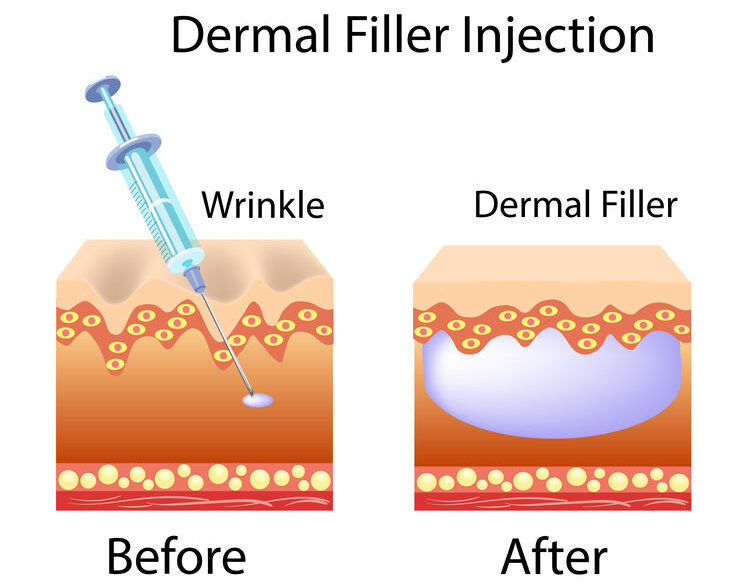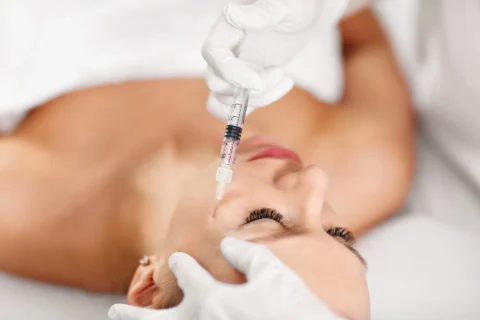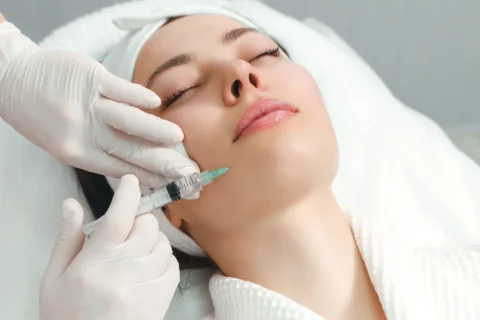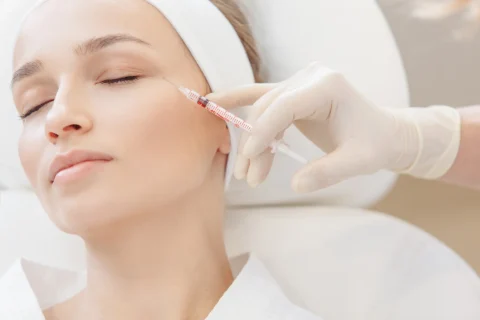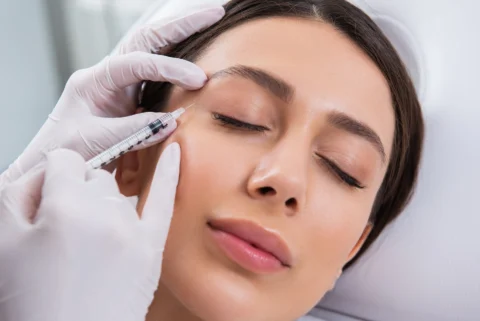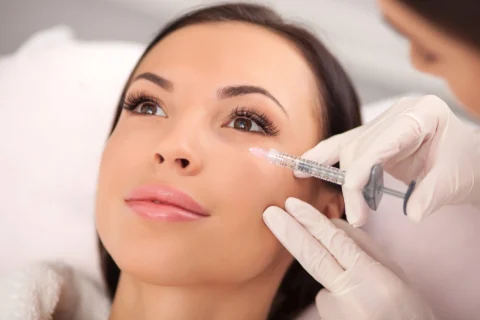Why You Need Dermal Fillers, not Botox
For many of us, the aging face is associated with wrinkles. Smooth, crease-free skin is held up as the standard of youth, leading many to believe Botox offers a panacea to the ravages of aging.
In fact, research over the past decades has revealed that while the erasure or softening of wrinkles provided by Botox certainly helps preserve a youthful appearance, preserving facial volume and fullness is equally important. Plump skin with full cheeks is synonymous with youthful vigor, and provides a softness to the facial features that Botox alone cannot achieve.
What are dermal fillers?
Dermal fillers, or soft tissue fillers, are products that are used to plump skin and temporarily address certain signs of aging that arise due to a lack of volume or thinning of the face. Most dermal fillers are composed of hyaluronic acid, a substance that occurs naturally in the body. Hyaluronic acid binds water molecules and improves the skin’s capacity to retain moisture, resulting in a plumper, smoother look. There are a range of dermal fillers available with specific FDA approved uses. The most popular fillers include Juvederm, Restylane, Belotero and Radiesse.
So how are dermal fillers different to Botox?
Botox is a neurotoxin that blocks nerve signals in the muscles where it is injected. With the nerves blocked, the targeted muscle is temporarily paralyzed. This inhibits the muscles from contracting or moving, meaning that skin above the paralyzed muscle will not crease or wrinkle either. Over time, Botox can help soften or even erase the appearance of dynamic wrinkles, which are formed as a result of muscle movement.
Dermal fillers, on the other hand, do what their name indicates: they fill in the skin. Fillers help to soften or reduce the appearance of static wrinkles, which result from a loss of the skin’s elasticity and collagen. Dermal fillers, also known as soft tissue fillers, can be injected beneath the skin to add volume and fullness to these thinning areas, smoothing out static wrinkles and fine lines. Botox and dermal fillers can be used in conjunction with each other to improve the appearance of both dynamic and static wrinkles on the face, rejuvenating the patient without significant recovery time.
What can dermal fillers do?
Dermal fillers can address an impressive range of aesthetic issues, including :
- Plumping thinning lips
- Adding volume to hollow areas on the face
- Decreasing the appearance of crepey skin or wrinkles beneath the eyes
- Softening the appearance of recessed scars, or acne-marked skin
- Softening or filling in static wrinkles
- Subtly lifting and augmenting hollow or sunken cheeks
- Filling in nasolabial folds
- Filling in marionette lines (the lines that run downwards from the corners of the mouth)
- Augmenting the chin
- Correcting mild asymmetry in the nose
The benefits of dermal fillers
Dermal fillers can subtly reinvigorate your appearance when administered by an experienced practitioner. When injected in conservative amounts, they provide natural looking results that allow for full facial expressiveness. What’s more, dermal fillers are safe, and ideal for those hoping to achieve improvements to their facial appearance without invasive surgery.
Three areas that can achieve particularly good results from dermal fillers include:
- The mid-face
Dermal fillers injected along the cheekbones can help to plump the cheeks, restoring fullness. This is turn can have the effect of subtly lifting the skin of the mid-face, and softening the appearance of nasolabial lines and jowls.
- The lips
Dermal fillers can volumize lips that appear lined or pinched. This also helps to smooth fine lines around the mouth.
- The nasolabial folds
For patients with mild nasolabial lines, dermal fillers such Juvederm or Restylane can help to soften their appearance. Most expert injectors usually emphasize softening the nasolabial folds, rather than completely erasing them, for the most natural results.

